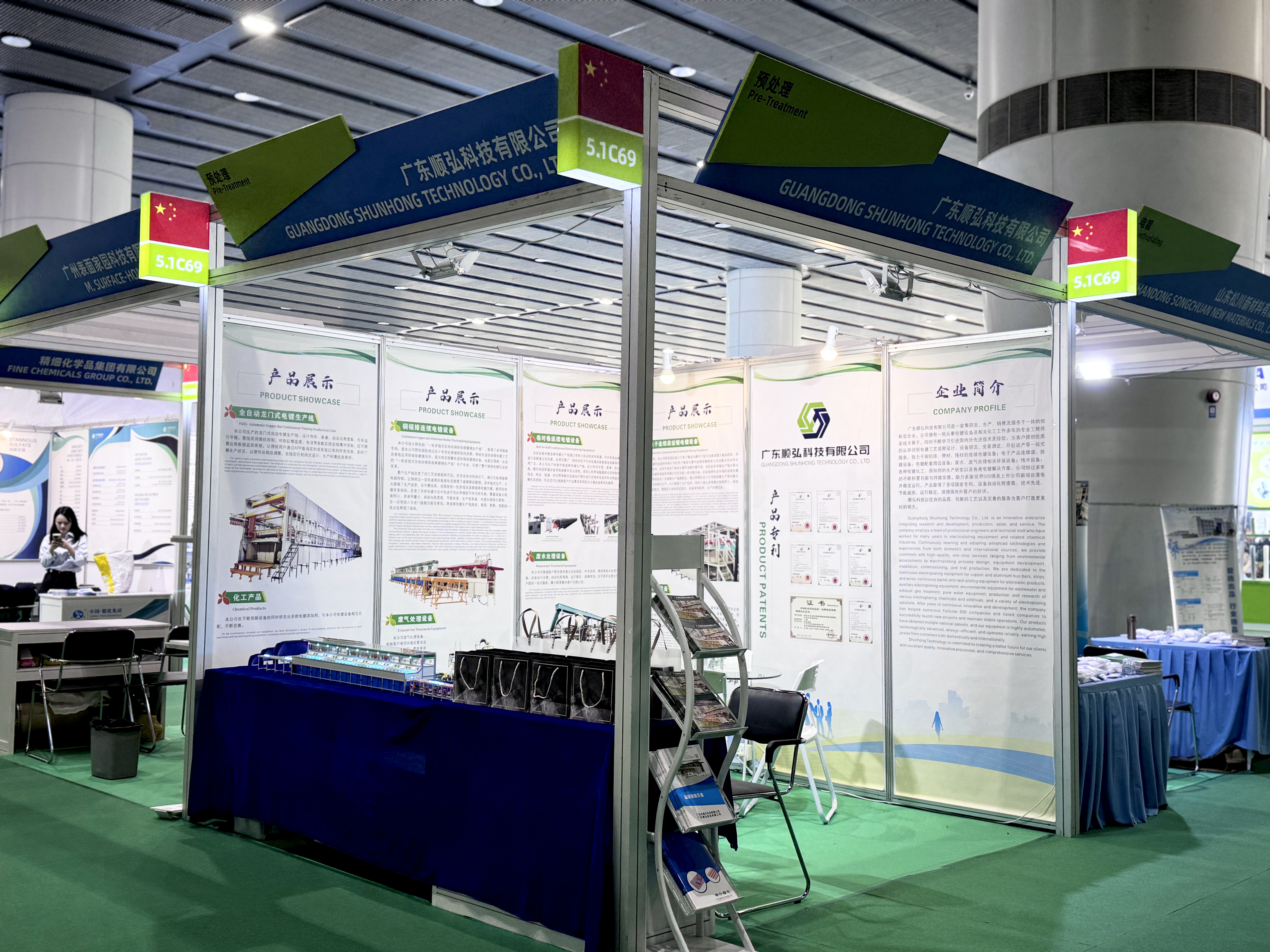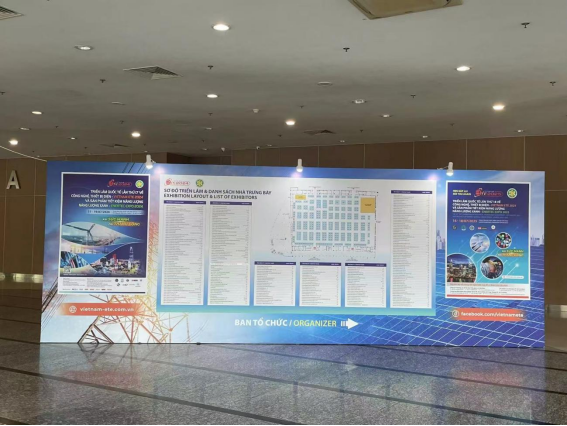Research on Continuous Mobile Tin Plating of Power Copper Bars
Chinese Science and Technology Journal Database (Full Text Edition) Natural Science
November 81, 2017
Research on Continuous Mobile Tin Plating of Power Copper Bars
Xu Shangang
Zhaoqing Zhongnan Tian Industrial Co., Ltd., Zhaoqing, Guangdong 526000
Abstract: Due to its excellent conductivity and moderate price, copper metal is widely used in the field of electronic power. However, copper is a reactive metal that is highly prone to oxidation in air. Therefore, a layer of tin plating is required for protection during use to extend its service life and enhance its effectiveness. At present, the commonly used method for tin plating on power copper bars or busbars in the market is hanging plating. Hang the copper bar in the tin plating bath with a hanger for tin plating. As the conductive point is a fixed point, the contact point gradually increases in temperature and resistance with the extension of electroplating time, resulting in a gradual decrease in electroplating efficiency; The current density of copper bars at different distances from the conductive point also varies, so the thickness of the plating layer and the corrosion resistance also differ; In the new tin plating method invented by me, the conductive point is fixed, and the copper bar moves continuously and uniformly, ensuring that the resistance and current of each part of the copper bar are consistent during the tin plating process. Therefore, the coating is smooth, uniform, and has excellent corrosion resistance.
Keywords: copper bar; Tin plating; a bus or bus bar; Continuous; Mobile
Classification number: TM621
Document identification code: A
Article Number: 1671-5500 (2017) 11-0081-01
1 Introduction
Copper bars are rectangular conductors made of pure copper or copper with a very small amount of silver, with a cross-sectional area of rectangle or chamfered rectangle (chamfered rectangle to prevent tip discharge). It is a high current conductive product, which we call copper busbar, copper busbar or copper busbar, grounding copper busbar. Copper bars play a role in transporting current or connecting electrical equipment in circuits. Due to its excellent conductivity, copper bars are mainly used in electrical engineering such as primary lines (high current phase lines, neutral lines, and ground lines all use copper bars), switch contacts, distribution equipment, bus ducts, etc. They are also widely used in metal smelting, electroplating, and other high current projects. The connection of primary components with high current on the electrical cabinet is made with copper bars. The main consideration when using copper bars is the current carrying capacity. Choose the appropriate copper bar according to the current size, and the screws at the connection must be tightened, otherwise there is a possibility of melting the copper bar when the current is high.
However, copper is a reactive metal that is prone to oxidation, blackening, or the formation of copper green in industrial, marine, or humid environments. Therefore, in order to increase the contact area, reduce the contact resistance of the overlap surface, and enhance conductivity, tin plating is applied to the surface of the copper bar. The purpose of surface treatment with tin plating on copper bars is to prevent oxidation. Due to the highly stable chemical properties of tin, which does not undergo chemical reactions with water, various acids, and bases, the tin plating layer has good stability in air. Copper and tin, two different metal materials, can easily achieve permanent atomic crystal bonding at various ambient temperatures, forming an alloy layer that enhances the adhesion of the tin coating. The tin plating layer on the copper bar is evenly distributed, and the tin has excellent conductivity, good density, and high smoothness, which enhances the wear resistance of the copper bar. After tin plating on copper bars, the purple copper has a uniform protective layer, which is sufficient to resist the corrosion of atmosphere and fresh water, achieving the effects of oxidation resistance, acid and alkali resistance, and corrosion resistance. Extending the service life by several times or even more than ten times greatly improves the service life and effectiveness of copper.
2 Traditional Tin Plating Methods for Copper Bars
The current traditional method for tin plating on copper bars is the hanging plating method. The specific production process includes copper bar hanging, degreasing (electrolytic degreasing or chemical degreasing, or a combination of both), multiple water washings, activation, tin plating, multiple water washings, passivation, multiple water washings, hot pure water washings, drying, hanging, and packaging. The temperature of the oil removal process solution should be controlled between 40-60 ℃, the temperature of the tin plating process solution should be controlled between 15-20 ℃, and the temperature of the hot pure water should be controlled above 60 ℃. All cylinder slots are open. Stainless steel plates are hung on both sides of the electrolytic oil removal tank and connected to the corresponding positive pole of the power supply. There is a certain gap in the middle and a conductive copper rod is installed to connect to the corresponding negative pole of the power supply. During operation, a hanging tool with a copper bar is hung on this copper rod; Both sides of the tin plating tank are covered with pure tin plates and connected to the corresponding positive pole of the power supply. When powered on, the tin plates are continuously dissolved to replenish the tin ions in the plating solution. The conductive copper rod in the middle is connected to the corresponding negative pole of the power supply for hanging fixtures. The hanging device is a conductive hook made of stainless steel or other metals; Use several hangers to hook the copper bars and place them in each cylinder slot according to the process requirements for processing. The disadvantages of this process are as follows: (1) Due to the fixed conductive point, the current density at different distances from the conductive point of the copper bar also varies, resulting in different thicknesses of the plated layer. If the copper bar is not moved during the tin plating process, there may be serious problems such as missed plating at the contact points between the copper bar and the hanging fixture, and the corrosion resistance may also differ; (2) As the conductive point is a fixed point, the temperature of the contact point gradually increases with the extension of electroplating time, resulting in a gradual decrease in electroplating efficiency. (3) All tanks in this process are in an open state, and the acid and alkali mist generated cannot be sealed and collected, seriously affecting the environment. (4) During the transition of each process, the loss of the tank liquid is significant. (5) The exposed part of the hanger will be plated with tin, which wastes some raw materials and causes hanger wear and tear. (6) Each cylinder has a large capacity, requiring a large amount of slotted medicine and various raw materials. The patent application numbers 201710622848.1, 201720926461.0, 201720927754.0, and 201720926605.2, which I have researched and invented for many years, completely subverts the widely used method of hanging copper bars for tin plating on the market. Instead, the copper bars are moved and conductive wheels are installed at both ends of the cylinder slots that require conductivity. When the copper bars pass through these conductive wheels and enter the cylinder slots, they are electrified.
3 Traditional Copper Bar Tin Plating Principles and Processes
The copper bars are placed on the feeding rack, and the adjustable microcomputer control continuously and uniformly moves the copper bars to be electroplated through various supporting transmission systems in each cylinder slot. The copper bars are sent to ultrasonic degreasing, electrolytic degreasing (according to the oil situation on the surface of the plated copper bars and production efficiency requirements, the entire copper bar cleaning and degreasing process can be equipped with the most complete ultrasonic degreasing, cathodic electrolytic degreasing, anodic electrolytic degreasing, or only one or two of them), multiple spray water washing, weak acid neutralization activation, tin plating (multiple tank tin plating can be equipped according to production needs), multiple spray water washing, passivation, multiple spray water washing, ultrasonic hot pure water cleaning, two compressed air knives to remove residual water, and all copper bars pass through. After the plating treatment mechanism, the sensor sends a signal to the feeding mechanism, The unloading mechanism transports the copper bars to the packaging area on one side of the unloading rack for packaging, and the tin plating of the copper bars is completed.
The advantages of this method equipment are:
(1) After each process, a compressed air blowing device is equipped to blow off the residual liquid medicine from this process, so as to prevent the liquid medicine from being carried into the next process and causing excessive loss, with almost no loss.
(2) Each cylinder slot is enclosed, and a very small amount of exhaust gas is collected and treated through a collection tower before being discharged, which is pollution-free to the environment and has a good working environment
(3) Due to the continuous and uniform movement of the copper plating rows in each cylinder groove, and the fact that the conductive wheels of each process cylinder groove are outside the cylinder groove and not immersed in the cylinder groove, the conductive points of the copper bars move continuously and uniformly during the processing in each process. Therefore, it can ensure that the resistance of the copper bar at each point in the same cylinder slot is consistent, so the current at each point of the copper bar in the same cylinder slot is also consistent. Because the current at each point of the copper bars in the same cylinder slot is consistent, it ensures that the coating on the copper bars in the same cylinder slot is the same, and the porosity is also consistent. The corrosion resistance is also uniform.
(4) Due to the continuous and uniform movement of the copper bars in the process of this equipment, the flow speed of the chemical solution in each tank is also very fast. Therefore, when the concentration of the chemical solution around the copper bars becomes diluted due to electrolysis during oil removal or tin plating, it can be replenished in a timely manner. As a result, the polarization difference is greatly reduced, and tin plating can be carried out with a higher current density, and the plated tin layer is smooth and uniform.
(5) Therefore, multiple continuous tin plating tanks are set up in the equipment process, so different working parameters can be set according to the process needs. By coordinating with each tin plating tank, multi-layer composite tin coatings can be plated. Therefore, it further enhances the smoothness and corrosion resistance of the tin coating.
reference
[1] Zhou Yanping, Lu Qiancheng, Chen Yiru Wire Copper Bar Forming Die [J]. Shanghai Large and Medium sized Electric Machinery, 2005 (04)
















Please first Loginlater ~